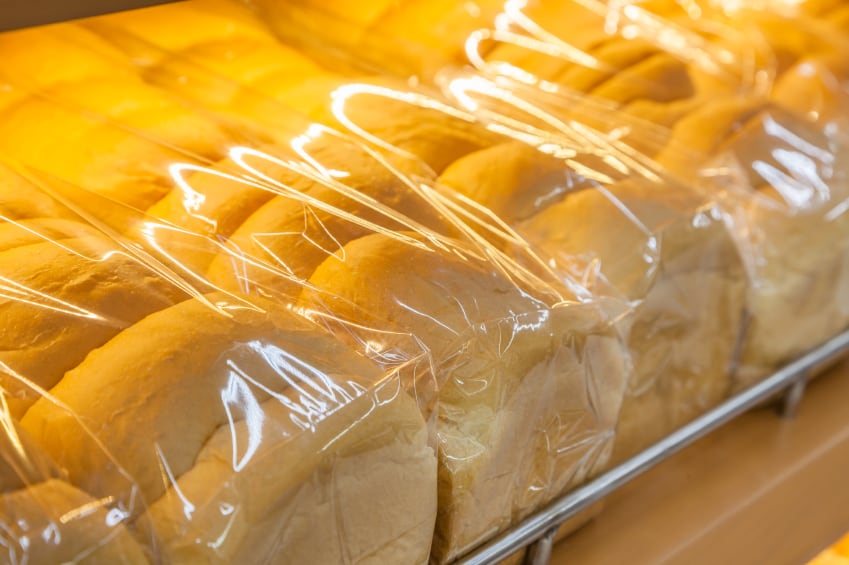The growing wave of concern surrounding plastic contamination in the global food supply chain has reached a critical tipping point. As consumer watchdogs, regulators and health advocates raise alarms, manufacturers – particularly those operating in the packaged and processed sectors – are finding themselves at the centre of a rapidly evolving debate.
The conversation is no longer confined to the environmental consequences of plastic packaging. Instead, it has turned inward, focusing sharply on the health implications of chemical plasticisers and the recurring presence of physical plastic fragments in everyday treats.
Plastic in the pantry

Nowhere has this shift been more visible than in the recent push by Consumer Reports (CR) to hold major food producers accountable for the hidden dangers in products consumers trust most.
In a bombshell investigation published earlier this year, the nonprofit consumer watchdog revealed a sweeping number of pre-packaged foods found on US supermarket shelves tested positive for concerning levels of phthalates. CR tested 85 popular snacks and other pre-prepared foods for three bisphenols and 10 phthalates, as well as some of their common chemical substitutes. It found 99% of supermarket and fast foods contain phthalates, while 79% contain traces of another potentially harmful substance called bisphenol A and other bisphenols. These chemicals – while ubiquitous in manufacturing environments – have been increasingly linked to a litany of serious health risks, including endocrine disruption, obesity, diabetes, cardiovascular disease and fertility issues.
Among the most prominent companies singled out was General Mills for its Yoplait low fat yoghurt (10,948 nanograms); Cheerios (10,980 ng); and Green Giant cream-style sweetcorn (7,603 ng), among other products. What was particularly jarring was the inclusion of Annie’s cheesy ravioli (with the highest reading of 53,579 ng per serving), a brand marketed as wholesome and widely considered a healthier choice for families.
“When you buy organic, the last thing you’d expect is that you would be eating plastic chemicals,” said Brian Ronholm, CR’s director of Food Policy, in a statement.
What’s a safe level of phthalates?
In the US, the Environmental Protection Agency (EPA) has set a safety threshold for common phthalates like DEHP - a group of chemicals commonly added to plastics to make them flexible and durable - allowing up to 20 micrograms per kg of body weight per day without expected harm. For a typical adult weighing 68kg (around 150 pounds), that works out to 1,360 micrograms per day.
According to CR, Annie’s Organic Cheesy Ravioli came in with 53,579 ng of phthalates in just one serving. That may sound small, but let’s do the math:
1 microgram (µg) = 1,000 nanograms (ng)
53,579 nanograms = 53.6 micrograms
So, Annie’s ravioli delivers nearly 4% of the EPA’s daily limit for an average adult per serving. And that’s just one meal. Many people are unknowingly exposed to these chemicals from multiple food sources throughout the day.
The advocacy group followed up its investigation with a formal letter to General Mills’ CEO Jeffrey Harmening, urging the food giant to reduce plasticisers in its production and packaging processes. It additionally launched a petition to encourage public pressure on the food industry to take proactive steps, not just reactive ones.
The trouble is, there are so many ways these chemicals enter the food stream. Early efforts to limit exposure to them focused on packaging, but it’s now clear that phthalates can also get in from the plastic in the tubing, conveyor belts and gloves used during food processing, and can even enter directly into meat and produce via contaminated water and soil.
And while CR acknowledged it’s nearly impossible to eliminate them entirely, it argued this isn’t an excuse for inaction. In its test, CR found a serving of Pizza Hut’s cheese pan pizza came in with half the phthalate levels of a similar pizza from Little Caesars.
“That tells us that, as widespread as these chemicals are, there are ways to reduce how much is in our foods,” said James E Rogers, PhD, who oversees product safety testing at CR.
Real recalls
In recent months, the issue of physical plastic contamination – and other foreign materials -has also taken centrestage in a series of alarming food recalls.
Last month, Chomps Beef Sticks were pulled from US shelves due to metal contamination, a recall that made national headlines. Around the same time, Rude Health Chocolate Crunch Granola was recalled in the UK over the possible presence of insects. And more recently, Tony’s Chocolonely – a Dutch company widely respected for its ethical stance – has recalled Easter eggs from supermarket shelves in both the US and UK after metal fragments were discovered.
But plastic has been a particularly persistent problem. In December, Connie’s Thin Crust Cheese Pizza, produced by Palermo Villa, Inc, was recalled due to plastic contamination. A month earlier, Walmart pulled its Great Value branded Cheese Danishes and Cinnamon Rolls off shelves for the same reason. And in August, Kodiak waffles sold at Costco were yanked following reports of hard plastic pieces found in the product.
While the origin of these intrusions varies, their impact is the same: shaken consumer confidence, negative press and costly product recalls. For brands that trade on trust – especially those that emphasise health or sustainability – the reputational damage can be devastating.
The system can be fixed

What’s driving the surge in contamination issues? The answer lies in a perfect storm of factors: increasingly complex global supply chains, ageing or inadequate processing infrastructure, a patchwork of inconsistent regulations and growing reliance on outsourced or third-party ingredient suppliers. Many manufacturers are still using outdated equipment made with materials that can degrade over time – leaching chemicals like phthalates – or relying on supply partners without full transparency into their safety practices. Add in the post-pandemic labour shortages, cost-cutting pressures and increased demand for ultra-processed convenience foods, and you’ve got a landscape where mistakes are not only more likely – they’re harder to catch.
More importantly, though, what can producers do to reverse the trend?
According to the recently released report ‘Food Safety in the Age of Transparency’ sponsored by SIAL Canada, the answers lie in a mix of regulatory adaptation, technological innovation and genuine consumer engagement.
The report paints a detailed picture of an industry undergoing a seismic transformation, driven by a growing demand for clarity on every step a food item takes from source to shelf.
One of the most impactful regulatory developments featured in the report is California’s AB 899 legislation, which imposes strict transparency requirements on infant food producers. The law mandates detailed disclosures of ingredient sourcing, processing methods and potential contaminants.
Jaclyn Bowen, executive director of the Clean Label Project, believes AB 899 is a gamechanger – not just for the baby food category, but for the industry at large.
“California AB 899 marks a pivotal moment for the baby food industry and the broader food sector,” she writes. “By setting stricter safety standards for heavy metals, it not only protects children’s health but also reinforces the growing demand for transparency and accountability … Brands that embrace these changes – by investing in safer sourcing, more rigorous testing and clearer communication - will be well-positioned to build long-term trust and loyalty with consumers.”
And talking communication, Jo-Ann McArthur, president & CEO of Nourish Food Marketing and head of the jury for the upcoming SIAL Innovation Contest, is a proponent of authenticity and transparency.
She believes that “we’re wired to be storytellers” and that relatable narratives can bridge the gap between producers and consumers. She advocates showing, not just telling. “And if you can show in real time, that’s when it really gets powerful.” She points to the use of QR codes and other tech that provide supply chain viability, allowing consumers to trace their food back to its origins and learn about the people and processes involved.
In this context, food safety isn’t merely a risk management issue; it’s a brand-building opportunity. Companies that can demonstrate safety, traceability and commitment to consumer wellbeing will have a distinct advantage in a crowded and increasingly sceptical marketplace.
The tech that could save your snacks

Of course, storytelling and transparency are only as strong as the systems backing them.
According to the report, the UK’s Food Standards Agency (FSA) recorded more than 1,800 food and feed safety incidents in England, Northern Ireland and Wales during 2023/24, highlighting the challenge of keeping food safe when complex supply chains involve so many different parties. That’s where technology steps in.
In a contamination event, every second counts. Traditional recall processes can take days to execute, potentially putting thousands of consumers at risk. According to Julie Vargas, VP and GM of Identification Solutions for Avery Dennison, artificial intelligence (AI), blockchain and the Internet of Things (IoT) are critical tools: allowing for real-time tracking and triggering alerts instantaneously to limit the scope of exposure, reduce liability and ultimately reinforce consumer confidence.
“Emerging technologies are fundamentally reshaping the food system and creating opportunities for innovation, efficiency and trust-building that were previously unimaginable,” pens Vargas. “But the journey doesn’t end with adoption. Businesses need to embed these technologies into their cultures and operations. Collaboration across the industry – from regulators to retailers and tech innovators - will be key to unlocking the full potential of these advancements.”
But even the best technology can’t operate in a vacuum. The report stresses the importance of educating consumers about food safety risks and the steps companies are taking to address them. Too often, transparency initiatives falter because the information is too technical or buried in hard-to-navigate platforms. Companies are now investing in user-friendly dashboards, QR-code traceability and clear messaging to ensure that transparency doesn’t just exist, it resonates.
And then there’s the US FDA’s 2022 Food Traceability Rule, which has given the industry three years to prepare for compliance. Due in less than a year, it mandates enhanced traceability recordkeeping for entities that manufacture, process, pack or hold foods listed on the Food Traceability List (FTL). The primary goal is to expedite the identification and removal of potentially contaminated foods from the market, thereby reducing foodborne illnesses and fatalities.
“There is no question the Traceability Rule is challenging, requiring new ways of doing business, both within an organisation and across the supply chain,” concedes food safety expert Dr David Acheson. “But the innovation that comes from such challenges is sure to move the industry forward as the interoperability is initially worked out and successively improved.”
Call for global action

There’s a growing call for global harmonisation of food safety standards. In an era of transnational supply chains and cross-border trade, fragmented regulations pose major hurdles to consistent quality control. A contaminant that’s deemed safe in one country may trigger a recall in another. To tackle this, the report recommends greater collaboration between international regulatory agencies, industry consortia and advocacy groups.
“California’s stringent regulators often set a global benchmark … For international brands, aligning with AB 899 could serve as a strategic advantage, signalling to global consumers that their products meet some of the highest safety standards in the world. This can open doors to new markets and reinforce trust among consumers who prioritise food safety and transparency,” notes Bowen.
“The journey doesn’t end with adoption [of smart tech],” adds Vargas. “Businesses need to embed these technologies into their cultures and operations. Collaboration across the industry – from regulators to retailers and tech innovators – will be key to unlocking the full potential of these advancements.”
Reports and recalls tied to plastic contamination serve as stark reminders that even beloved brands are not immune to supply chain failures. Producers can no longer afford to treat food safety as an internal compliance matter.
It’s now a public performance – a daily demonstration of integrity, innovation and respect for the consumer. Those who embrace this challenge not only safeguard public health but also solidify their place in an industry where trust is the ultimate currency.


